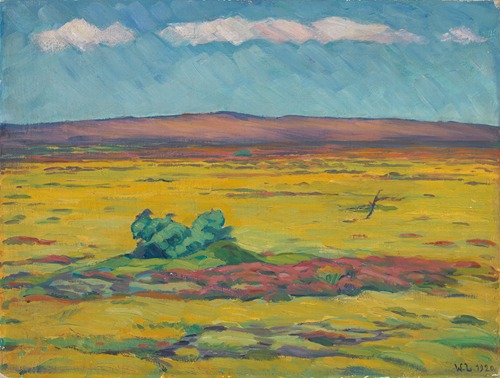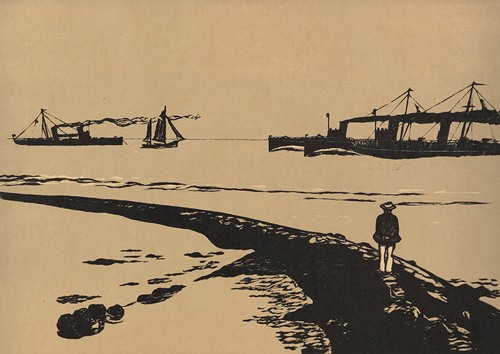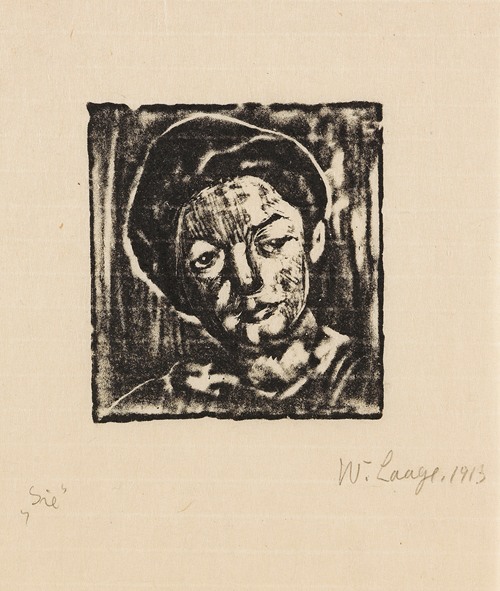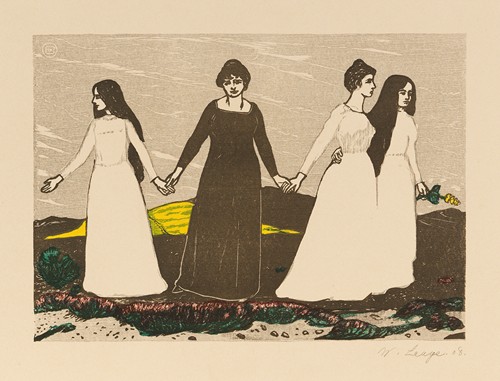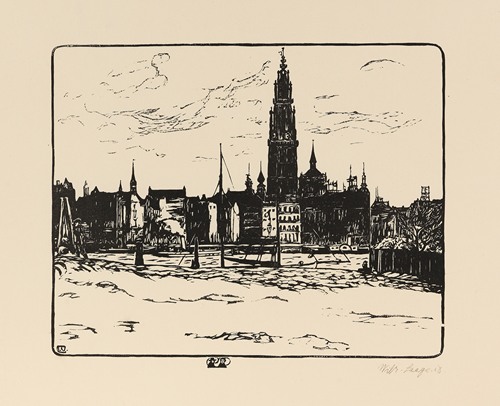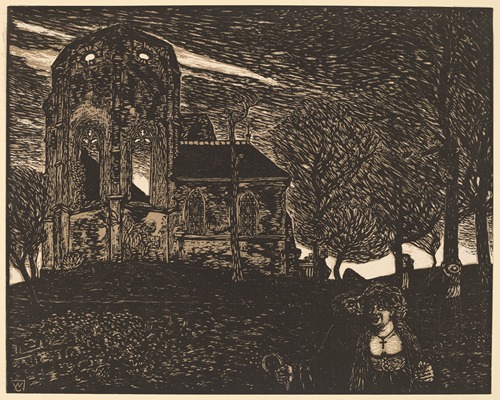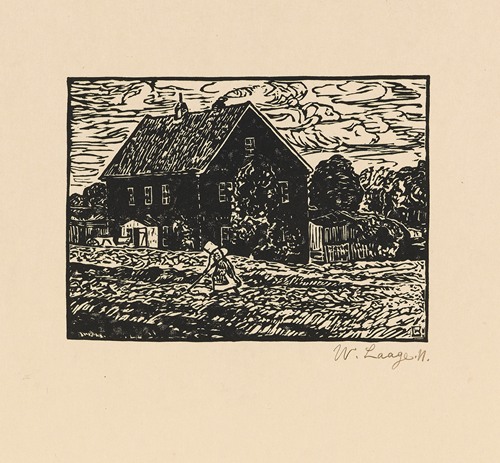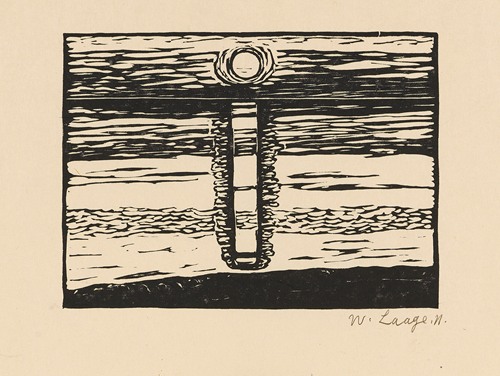
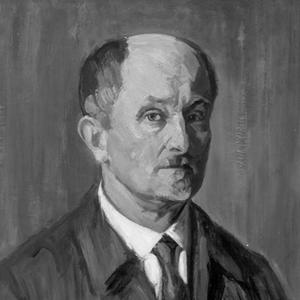
Wilhelm Laage was a German painter and wood cutter.
Wilhelm Laage was born in 1868 near Hamburg, in the village of Stellingen (then Schleswig-Holstein) in the grandparents' farmhouse. His father worked as a cemetery gardener and gravedigger, his mother in a bleaching factory. After finishing school, he first worked in his mother's bleaching shop, then for eight years in a Hamburg tavern. In his spare time, Laage began to draw and paint. From 1890 to 1892 he attended the trade school in Hamburg and, through support from Alfred Lichtwark, from 1893 to 1899 the art academy in Karlsruhe under Carl Langhein , Robert Poetzelberger and Leopold von Kalckreuth , whose master class he became. He became friends withKarl Hofer , Friedrich Missfeldt and Emil Rudolf Weiß . In 1896 he began his graphic work with woodcut and lithography . In 1899 he followed his teacher Leopold von Kalckreuth to the Kgl. Art school in Stuttgart. In the same year Friedrich Dörnhöffer published his first article on the graphic Laages in Die Graphische Künste, which appeared in Vienna.
From December 1900 to May 1901 he stayed in Paris and worked in a studio on Rue Leclercs. In Paris he saw the first major Van Gogh exhibition in the Bernheim gallery. The picture “Die Heide”, created in Paris, received a silver medal in Oldenburg. ER Weiss publishes an article about Laage in the magazine "Ver Sacrum".
In 1903 Karl Ernst Osthaus bought the first works by Laage for the Folkwang Museum he founded in Hagen . In 1904 he took part in exhibitions in Vienna and Dresden ("Great Art Exhibition Dresden"). He married his classmate Hedwig Kurtz from Reutlingen and initially settled with her in Cuxhaven . There he is visited by the Hamburg art collector, patron and art critic Gustav Schiefler . In 1906 he exhibited together with Wassily Kandinsky , H. Neumann and G. Hentze as a guest in the 1st graphic exhibition of the artist group " Brücke " in Dresden. In September 1907 the Laage family moved thereBetzingen near Reutlingen, where she lived until 1914. Since he did not feel at home in Swabian at first, he returned every summer from 1908 to Cuxhaven and the Altenwalder Heide, where he loved to find his motifs for a long time.
In 1912 Gustav Schiefler published the oeuvre catalog "The graphic work of Wilhelm Laages until 1912". In 1914 he was awarded the Villa Romana Prize , the Honorary Prize of the City of Leipzig and the State Medal at the International Graphic Exhibition in Leipzig. Because of his advanced age, he finished his woodcut work in 1924, but continued to work as a painter. Laage died on January 3, 1930 while preparing an exhibition of his works in Ulm . Wilhelm Laage was a member of the German Association of Artists .
With his wife Hedwig Wilhelm Laage had the son Friedrich (1905–1940). As a child, he suffered from meningitis and suffered permanent brain damage in the course of this disease. This let Friedrich become a victim of the National Socialist euthanasia program . Friedrich Laage was murdered at the age of 35 in the Nazi killing center in Grafeneck near his hometown Reutlingen.
On April 30, 2017, an episode of the NDR's Lieb & Teuer program was broadcast, moderated by Janin Ullmann . In it, an oil painting entitled Mohn II , which was painted by Wilhelm Laage, was discussed with the painting expert Ariane Skora .
